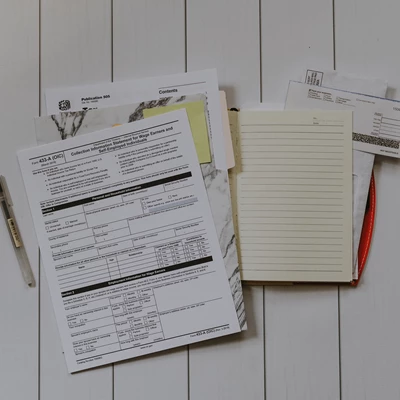Exceptions to the payment of capital gains
According to the IRS Code, the following cases are exempt from capital gains:
- The property sold is the own permanent address and the capital gains (the sale value deducted from the amortization of any loan contracted for the acquisition of the property) are fully invested in the purchase, construction or rehabilitation of other housing destined to own and permanent address, within 24 months or 36 months after the sale of the house;
- retired or over-65 taxpayers who invest capital gains in an insurance contract, an open pension fund ensuring a regular periodic income or in the public capitalisation scheme (retirement certificates) within six months of the sale of the property;
- Of real estate acquired before 1989.
Inheritance
At the time the property is inherited, the Irs assigns it a value. This amount is the amount subject to stamp duty (even if it is exempt from paying this tax) and will serve as a reference for the calculation of capital gains when the heirs decide to sell the property. In case you have inherited a property, it is very important that you know about the amount that the Irs has allocated to you.
In addition to the value of the property, it is important to purchase the property. In the case of inherited property, the date of acquisition to be considered is the date of death of the owner and not the date of sharing the property.
That is, if the property was inherited by death of an ascendant in 1986, but the sharing of assets took place in 1995, the date of acquisition to be considered is 1986 and, because it is before 1989, the capital gains obtained is not subject to taxation in IRS, but should still be declared in Annex G1 to model 3.
But be careful, this is only valid if you have inherited the entire property in a single date. If you have obtained portions of the property on different dates, the situation will be different. If the property was owned by an ascendant, when inheriting in full, there will only be one date of acquisition. But if the property was owned by two ascendants, at the death of one, it will inherit a part of the property and, after the death of the other, the remaining part. It therefore has separate acquisition dates before the Irs.
In that case, each of those dates corresponds to a different acquisition value and a proportion of the selling value, to be broken down in the IRS declaration in Table 4 of Annex G to Model 3, and there may be parcels which must be entered in Table 5 of Annex G1.
Mechanisms to minimize capital gains payment
If you do not meet conditions for exemption, then you can try to adopt some strategies to reduce your tax. To this end, in the IRS statement, the invoices (up to 12 years) of the following expenses must be lowered in the capital gains calculation:
- Improvement and maintenance works of the house, such as improvement works, paintings, insulation, among others;
- Fixed appliances, such as hoods, air conditioning, among others;
- costs relating to the acquisition and disposal, such as IMT (or SISA), notary and land registration charges, expenditure on energy certification and the intermediation commission;
- Compensation demonstrably paid for the onerous waiver of contractual positions or other rights inherent in contracts relating to those assets.
How to calculate the capital gains payment?
Taking into account all exceptions and mechanisms to minimise capital gains payment, calculating taxation may not be an easy task.
If someone, without exemption from his payment, bought a property for 100,000 euros and now will sell it for 150,000 euros, he will get 50,000 euros in capital gains. That is, 50% of the profit obtained in this hypothetical scenario, 25,000 euros, will be taxable income.
The Tax Authority will include this amount to other income, regardless of its category. The tax is calculated on this amount, taking into account its taxable income, and the rate is applied by tiers. In a simplistic way, we can say that you will pay tax on 25% of the value of capital gains, which in this example is eur 12 500.
However, there are a few other aspects to consider in this equation. When making the calculations, note the Property Asset Value (VPT), especially if it is different from the value at which you purchased the property. It should be taken into account that the value at which the property was purchased relates to the value that is explicit in the deed of the house and the sale value corresponds to the assessment made by the Finances.
According to the previous example, if you sold your property for 150,000 euros, but your VPT is 170,000 euros (at the time of sale), the Finance Will consider that the profit you made from the sale, that is, the capital gains were 70,000 euros and not 50,000 euros. Therefore, the taxable income will be 35,000 euros and not 25,000 euros.
In these situations, you should ask an accountant for help and try to prove to the Irs that you received less money for the sale of the house. To do this, it may be necessary not only to expose your bank accounts, but also to the buyer's.
Capital gains calculation formula
For a more accurate calculation of capital gains to be obtained from the sale of your property, apply the following formula:
Capital gains = value of sale of the property - (value of acquisition of the property x monetary coefficient) - charges with purchase and sale - charges borne with appreciation of the property in the last 12 years.
How to declare capital gains?
Whenever a property (building or land) of a natural person is sold, such sale must be declared in model 3, in the year following its sale, whether there is a gain or loss. To do this, you must use annexes G or G1 of model 3.
Model G refers to sales subject to tax (even if they may benefit from exemption) and model G1 is used to declare sales not subject to taxation (in the case of properties purchased before 1989).
Source: Supercasa.pt



